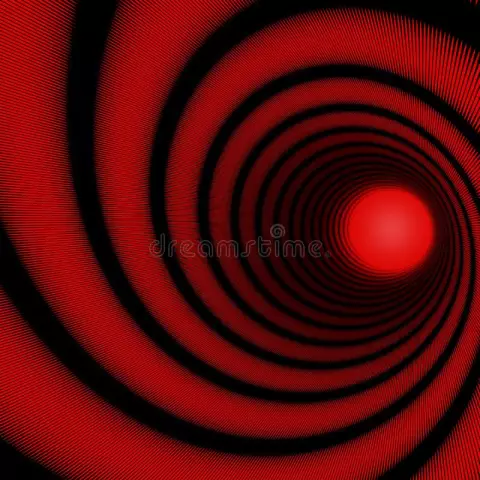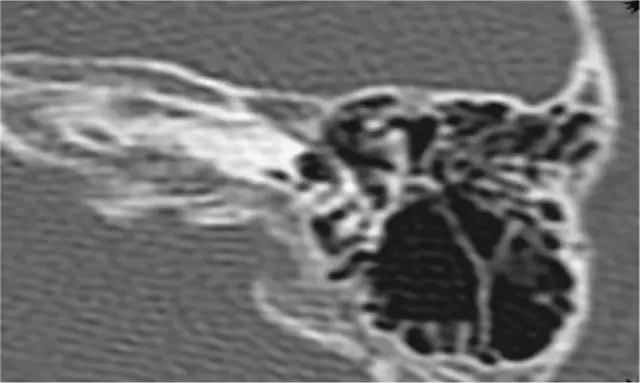- Author Rachel Wainwright [email protected].
- Public 2023-12-15 07:39.
- Last modified 2025-11-02 20:14.
Is it possible to put a spiral?

An intrauterine device is a T-shaped contraceptive, which is a device made of copper (silver, gold) and plastic that prevents the movement of sperm into the uterine cavity. If the fusion of the sperm with the egg has already occurred, the spiral prevents the fertilized egg from attaching to the surface of the uterus, as a result of which it is aborted in the second half of the menstrual cycle.
The prototype of the first intrauterine device was a ring made of an alloy of bronze and brass with a small copper content, proposed as a contraceptive by the German physician Ernst Grefenberg in 1926. Several decades later, in 1960, American gynecologist Jack Lipps developed a device called the "Lipps loop". In its manufacture, an elastic material was used, which eliminated the risk of tissue trauma during the installation of the IUD.
Many women of childbearing age ask the question: “Is it possible to put a spiral? Will the presence of a foreign body harm the body? Let's try to figure it out.
General information about the IUD
The installation of the spiral is carried out only in a medical institution after the tests and examination of the patient by a gynecologist and is recommended for women giving birth without any identified infectious and inflammatory diseases of the genitourinary system.
The device is placed for a period of 3-5 years on the third or fourth day from the onset of menstruation, which theoretically excludes a woman's pregnancy. Sexual life is allowed to be conducted 8-10 days after its introduction.
To eliminate the risks of possible complications before the introduction of the IUD, the doctor prescribes the following tests for the woman:
- Bacteriological analysis of smears of the cervix and vagina;
- General analysis of urine and blood;
- Screening for sexually transmitted infections (hepatitis B and C, syphilis, HIV);
- Ultrasound of the pelvic organs.
The installation of the spiral is possible only if the I and II degrees of purity of the vaginal sphere are available. If an infectious-inflammatory disease is detected, the gynecologist assigns an in-depth study and carries out antimicrobial treatment. Before the introduction of a contraceptive, a 6-month break is required for complete recovery in order to prevent the transition of the disease to a chronic form.
Only a specialist can answer the question "is it possible to put a spiral" in an individual consultation. Women with childbirth and several abortions in history should treat the procedure for installing the spiral with caution, since in some cases (in 1%) the IUD can cause perforation (perforation) of the walls of the uterus.
Many women

are interested in whether it is possible to put a spiral after childbirth in order to reduce the risks of repeated pregnancy? Experts answer unequivocally: “you can”. The introduction of the IUD can be carried out 2-3 months after childbirth after being examined by a gynecologist. If a woman is planning pregnancy, fertilization is possible already in the first month after the removal of the spiral by a specialist.
Is it possible to put a spiral on nulliparous women?
The opinion of gynecologists on this issue differs: some are sure that it is impossible, other specialists argue that it is possible, but only when all the necessary research is carried out. But doctors agree on one point of view: even the most professional installation of the spiral can cause unwanted complications for women's health.
Adverse reactions associated with IUD implantation are most often observed in patients with chronic pelvic inflammatory disease, irregular menstruation, as well as in nulliparous women, which partially answers the question “is it possible to put a spiral in nulliparous women”.
At the time of the introduction of an intrauterine contraceptive, uterine bleeding may occur, less often - damage to the cervix. During contraception, a certain percentage of women complain about:
- Drawing pains in the lower abdomen;
- Menometrorrhagia (spotting), which against the background of profuse bleeding when receiving drug treatment is an indication for the removal of the spiral;
- Inflammatory diseases of the pelvic organs. Inflammatory reactions with an IUD occur in about 4-15% of cases and can manifest as endometritis, cervicitis, pelvioperitonitis, and pelvic abscess. With the transition to a chronic form, these diseases can provoke a violation of fertility and lead to infertility, which can become a severe psychological trauma for a nulliparous woman.
The installation of an intrauterine device, as mentioned above, increases the risks of inflammatory diseases of the pelvic organs (due to the fact that the cervix is always slightly open), the onset of an ectopic pregnancy and thinns the layer of endometrium in the uterus, which can negatively affect the development of the desired pregnancy. increasing the risk of miscarriage.
So, is it possible to put a spiral on nulliparous women? In fact, it is possible, and during the work of gynecologists, this practice is widespread. However, girls who are just about to become mothers in the future are advised to use alternative means of contraception: condoms, oral contraceptives, suppositories, etc.
Contraindications to the installation of an IUD
On the forums on the Internet, you can find out that at a gynecologist's appointment, many women are interested in whether it is possible to put a spiral in the presence of diseases of the genital area. Specialists have announced a list of direct contraindications to the introduction of an intrauterine device. These include:
- Bloody discharge of unknown etiology;
- Inflammatory and infectious diseases of the small pelvis;
- Fibroids, deforming the uterus;
- Cervical pathologies (erosion, polyps, cervicitis);
- Malignant tumors of the cervix and uterine body;
- Pregnancy.
Relative contraindications to the installation of an IUD include an ectopic pregnancy in the past, diseases associated with bleeding disorders, heart defects, painful menstruation. Also, the use of an intrauterine device is not recommended for women who have experience of communicating with many sexual partners.
Thus, it is possible to use the spiral as a means of protection, but only taking into account the possible risks, weighing all the pros and cons.
Found a mistake in the text? Select it and press Ctrl + Enter.






